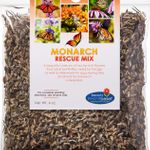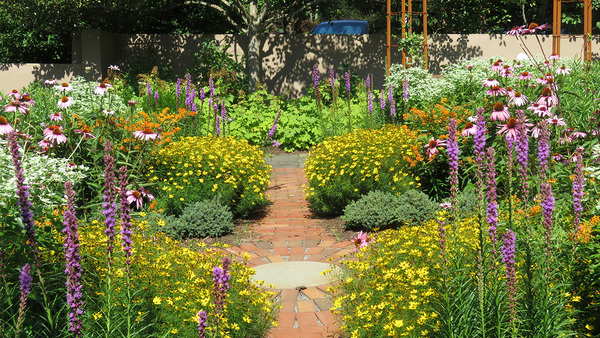
Gardeners are becoming more aware of the importance of pollination in our gardens. We now plant early-blooming plants for bee food and add areas of native plants to encourage native bees to populate our gardens. Mason bees help us go one step further.
Igniting a passion
Several years ago, I discovered how easy it was to have mason bees in my garden. Of course, like many things, I started out small and gradually got more and more involved. The first house for my mason bees was a PVC tube with a cap on it. I nailed the cap to a post outside and then added the tube. The wood block for the bees went in, I purchased the bees, warm weather happened, and then the bees appeared! It really was as simple as that. Well, there are a few more bits of information that you should have.
Getting started
I purchased my first kit from my local Valley Nursery in Poulsbo, Washington. It’s a Crown Bee Kit, and the bees come from there as well. You can purchase the house separately or make one of your own. The kit comes with a wooden block with holes already drilled, a piece of fabric sprayed with an attractant, and a box of bees. I also bought paper tubes to fill in around the blocks and provide more space. The bees can keep in your refrigerator until the weather warms to 53°F at night.
A perennial cycle
When the weather is right, the attractor goes in on top of the block, and the box of bees goes on top of that. The bees will emerge to start foraging for food (pollinating), and the attractant will help them find their way back. The bees will pollinate and gather pollen to feed their young. They will lay eggs in the tubes, pack in some pollen, add some mud, and then start again until the tube is full, ending with more mud. They will continue for several weeks. After they are finished, they will die, and the eggs will stay dormant until the next spring when new bees will emerge from the tubes and start the cycle again.

Maintaining proper conditions
Houses should tilt down slightly to protect the tubes from the rain. They should face east or south so the morning sun warms them before they start their day’s work. A good water or mud supply should be fairly close. I have a stream on my property, so that works. Watch for predators such as birds who like to eat the eggs. In early spring I put a plastic grid over the front of the house to keep birds from pulling out the tubes. The grid must be big enough for the bees to fly through.
A few options for overwintering
For the first couple of years, I cleaned out the boxes and the bees and stored them in the refrigerator over the winter and started the cycle over again in the spring. (You can learn about this process at crownbees.com.) Last year, I had more bees than there was room for in the houses. Being very industrious, they decided to use the corrugated polycarbonate sheets on my greenhouse. I now have a perfect viewing of the colony of mason bees on the sides of my greenhouse. Many farmers do not clean the boxes or bees but leave the houses outside, protected over the winter.

Why mason bees
There are a few reasons why you should consider housing mason bees in your garden this year:
- One mason bee can pollinate as many flowers as 100 honeybees.
- They are solitary bees, which mean they don’t swarm in a hive, they have no stingers, and they are not aggressive.
- Most mason bee species are native.
- They are fun to watch, and it’s interesting to learn about their behaviors.
- They will live in the places you provide and in your surrounding garden.
Mason bees are one of the best things to see in spring. Fascinating to watch, they are busy bees, doing so much good in the garden.
—Susan Calhoun is the owner of Plantswoman Design in Bainbridge Island, Washington.
Fine Gardening Recommended Products

Monarch Butterfly Rescue Wildflower Seeds 4 oz.
Fine Gardening receives a commission for items purchased through links on this site, including Amazon Associates and other affiliate advertising programs.

Planting in a Post-Wild World: Designing Plant Communities for Resilient Landscapes
Fine Gardening receives a commission for items purchased through links on this site, including Amazon Associates and other affiliate advertising programs.

Pruning Simplified: A Step-by-Step Guide to 50 Popular Trees and Shrubs
Fine Gardening receives a commission for items purchased through links on this site, including Amazon Associates and other affiliate advertising programs.



















Comments
Log in or create an account to post a comment.
Sign up Log in